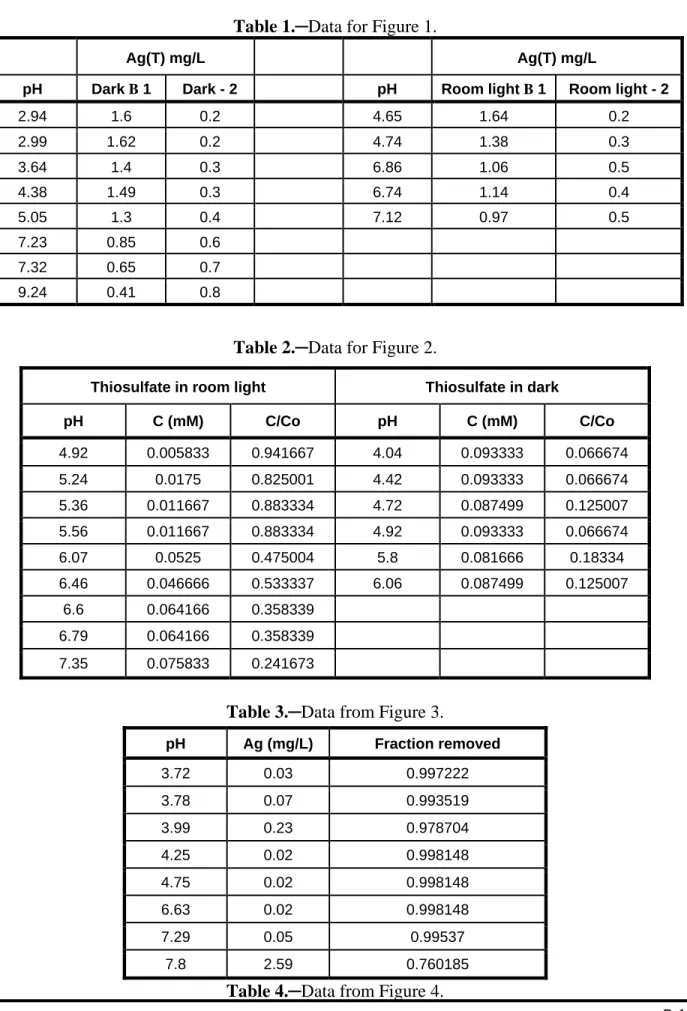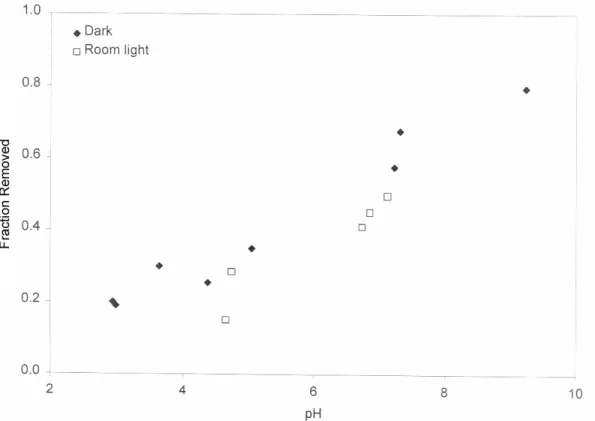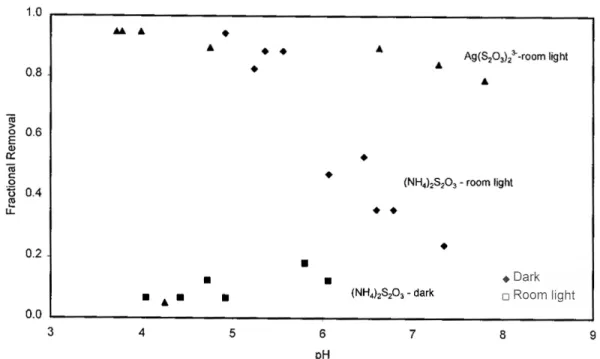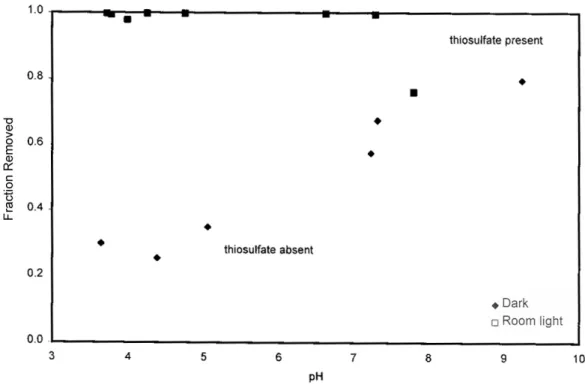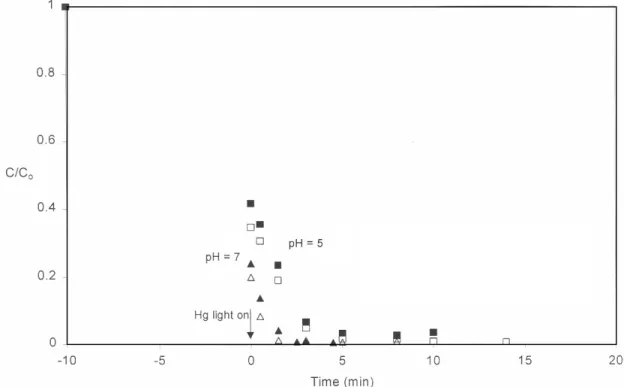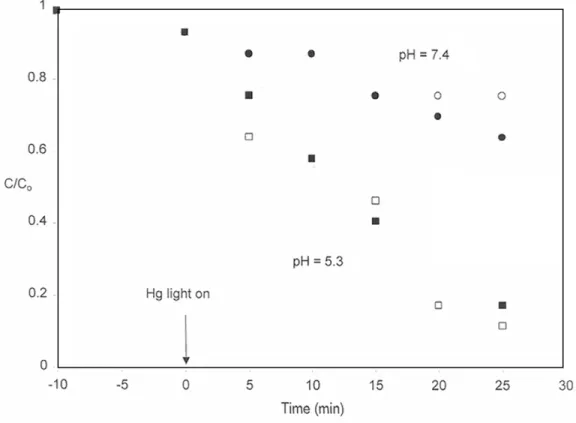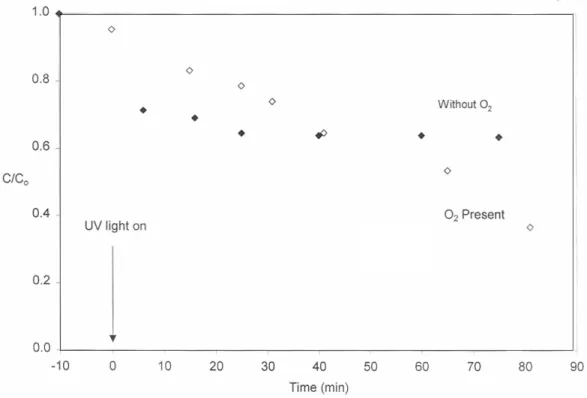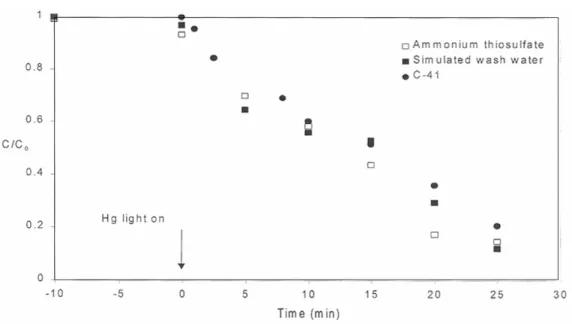The mission of the Bureau of Reclamation is to manage, develop, and protect water and related resources in an environmentally and economically sound manner in the interest of the American public. The information in this report was developed for the Bureau of Reclamation; no warranty of accuracy, usefulness or completeness is expressed or implied. We acknowledge the financial support of the Research and Development Program for Desalination and Water Purification, Bureau of Reclamation – Agreement no.
Overview
The Need for a Cost-Effective Wash Water Recovery Process
For example, the wash water make-up rate specified for Eastman Color Print Film™ in the ECP-2A process is 4.8 liters per 100 feet of 35 millimeter (mm) film. The photo industry would welcome cost-effective recovery of silver from wash water and re-use of heated wash water. The only way this process wash water can be directly reused is to remove the silver and thiosulfate from the solution.
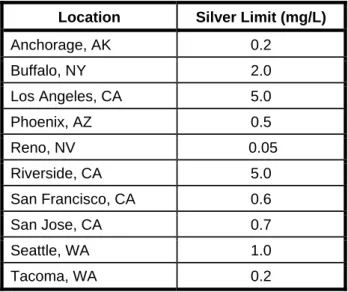
Previous Work on Photocatalytic Reduction of Silver
In longer term tests (100 hours) with total silver concentrations down to 0.1 M (molar), they saw no decrease in the reaction rate. In the absence of thiosulfate, the remaining Ag(I) in solution was less than 10 ppb (parts per billion) in about 6 minutes. Interestingly, a possible solution to the separation problem appeared in the literature prior to the work of Herrmann et al.
Conclusions and Recommendations
For example, the surface properties of the catalyst, including surface area, affinity for silver species, and conductivity of the solid are important, and the catalyst must be prepared in a form that is easily separated from solution. The goal of this study was to begin bringing these concepts together to develop a cost-effective, efficient, reliable, TiO2-based photocatalytic reactor for the treatment of dilute photoprocessing wash water. Based on our review of previous studies, we developed a series of questions to guide this project and continue the evaluation and development of this photoprocessing washwater treatment technology.
Can complexed silver be reduced and complexed thiosulfate oxidized simultaneously in a TiO2 suspension. Ionic silver (AgNO3 solution) is rapidly reduced when exposed to UV light in a TiO2 suspension. We believe that Ag+ is adsorbed on the TiO2 surface, where direct electron transfer takes place.
This reaction probably occurs indirectly, when hydroxyl radicals released from the TiO2 surface oxidize thiosulfate. Develop a more complete description of the TiO2 surface, including the relationship between surface hydroxyl density and redox active sites (anodic or cathodic). Examine the fate and elucidate the possibility of recovery of silver precipitated from the TiO2 surface.
Design and development of an efficient, reliable process for field testing and technology demonstration.
Technical Approach
Composite catalysts were prepared by combining titanium isopropoxide with one of the following compounds: aluminum tri-sec butoxide, iron(III) isopropoxide, or magnesium methoxide. At least two versions of each composite catalyst were prepared by combining different proportions of the organic reagents to reach a total volume of 15 mL. These suspensions were continuously mixed using a magnetic stirrer and the pH of the solution was adjusted by adding a known volume of 0.1 N HNO3 or NaOH.
A known mass of catalyst was added to a 500 ml test solution, which was adjusted to the initial desired pH with 0.1 N HNO3 or NaOH. For kinetic testing, 20 ml samples were periodically removed, centrifuged to separate the solid and liquid fractions, and the liquid was saved for later analysis. For equilibrium testing, a 50 ml sample of the suspension was removed, the pH was adjusted, another sample was collected, and this process was repeated until the estimated final pH value was reached.
All these samples were placed on a rotating stand for 24 hours, the pH of the suspension was recorded, and then the solid and liquid fractions were separated by centrifugation, and the liquid was stored for further analysis. Thiosulfate concentrations were determined using a slightly modified version of Method 4500, a colorimetric titration analytical technique for sulfite described in Standard Methods (APHA et al, 1993). A 100 W Hg bulb (Spectroline, with bulb . Sylvania par 38 Hg) was attached 3 cm above the surface of the liquid.
Samples were taken from the suspension at different times, solid and liquid fractions were separated using 0.2 µm. micrometer) filtration or centrifugation and the liquid was saved for later analysis.
Initial tests: Degussa P-25
For example, the presence of thiosulfate has a dramatic effect on silver uptake in TiO2 (Figure 3); removal is significantly increased, especially at lower pH values. Similarly, the absorption of thiosulfate by TiO2, which increases from dark to room light, increases even more when silver is present in solution (Figure 4). Thiosulfate removal on TiO2 is negligible in the dark, enhanced under fluorescent illumination, and further enhanced when silver is present.
In the presence of a UV light source, removal of silver from solution continues beyond what can be attributed to sorption alone (Figure 5). Further tests comparing silver removal at pH = 5 and pH = 7 show that although sorption (and possibly the initial photolytic reaction rate) is less at a lower pH, silver is rapidly removed from solution once the UV light is turned on , even at the lower pH. In similar tests performed with a UV light source, the total thiosulfate concentration decreases after the light is turned on (Figure 6).
Analogous silver removal data (Figure 9) suggest that there are some differences between the systems. Interestingly, despite the limited initial uptake, the subsequent photolytic removal of silver is at least as rapid and possibly more complete than it is in silver nitrate solution. Photolytic removal of silver was rapid in all solutions we tested, whether or not thiosulfate was present.
After the UV light was turned on, the silver concentration dropped rapidly and most of the silver disappeared within 10 minutes.
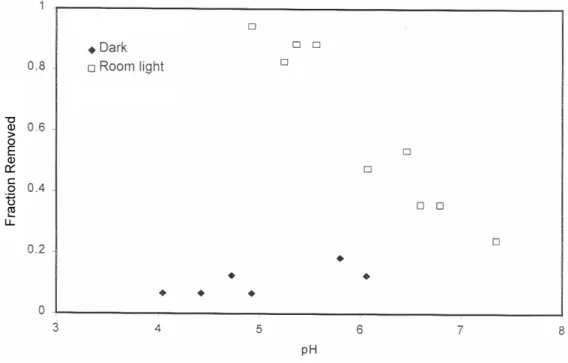
Putting the Initial Results in Context
The composition of the wash water is a function of the process specifications and operating procedures in a particular photoprocessing plant. The reactions taking place in these solutions depend on the surface characteristics of the TiO2 catalyst. When light of the appropriate wavelength hits the solid, the energy from the incident light excites electrons from the valence band to the conduction band.
The effective wavelength of light depends on the energy band gap of the semiconductor. These expressions can be combined to determine the relationship between the rigid band gap energy and the wavelength of the incident light. Alternatively, these compounds can also migrate to the surface of the solid where electrons and holes can reduce and oxidize the adsorbed species, respectively.
Some of the remaining possible reactions may not be feasible based on considerations of reaction mechanisms. One of them is that, except for the TiO2 band potentials, all the reduction potentials refer to reactions that take place in solution. In each of the first three one-electron transfer half-cell reactions, the products (reduced species in Table 5) are reactive, relatively unstable species.
If oxygen is present in solution and if it serves as an electron acceptor, a hydroxyl radical is the product of the third, sequential, one-electron transfer reaction (Table 5).

Process Summary: Putting it all Together
In water, the surface of an oxide such as TiO2 is covered with hydroxyl groups. Vohra and Davis (1997) reviewed data from a number of studies of TiO2 and reported that estimates of the surface site density ranged from 2 to 4 sites/nm2. Note that we write these reactions emphasizing that the surface hydroxyl group is oxidized by the hole that is inside the.
Furthermore, we believe that the hydroxyl radical has little affinity for the TiO2 surface and is released upon dissolution. There is no accumulation of electrons or holes, and the reaction rate is limited by the rate of the slowest reaction. Hydroxyl radicals play an important role in the overall process, because they are powerful oxidizing agents.
In the absence of thiosulfate (or other reduced compounds), two hydroxyl radicals can react with each other to form peroxide, which can be oxidized by another hydroxyl radical to form superoxide radical, which can be oxidized by yet another hydroxyl radical to eventually form oxygen. In our studies, the most likely reaction is the reduction of ionic silver to elemental silver. With this description of the reaction stoichiometry and mechanisms, another goal of this study was to apply this information to develop new catalysts for the treatment of.
Specific goals included trying to maintain the effectiveness of the P-25 catalyst while developing a catalyst that could be used in a fixed bed or column process.
Customizing the Catalyst
Because it seems unlikely that the free electrons travel away from the surface, we believe that the dissolved oxygen is adsorbed on the TiO2.
Sol-Gel Catalyst Synthesis
Catalysts containing Al or Mg appear to be x-ray amorphous; Fe-containing catalysts (which are at least 95. percent TiO2) have characteristic peaks associated with anatase. We performed a series of tests using a simulated wash water where, as mentioned above, the vast majority of silver was complexed as Ag(S2O3)23-. Representative results from tests with some of these catalysts (Figure 14) show that all synthesized catalysts suffer.
The fact that this solid had the highest surface area and highest ZPC suggests that our hypotheses may be correct and that sol-gel synthesis holds promise for catalyst development for the treatment of photoprocessing washwater.
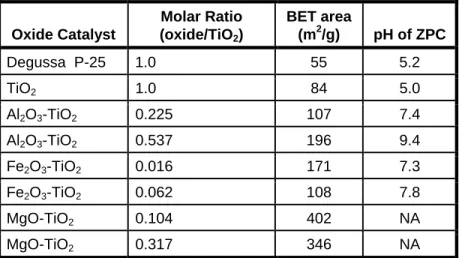
Summary Comments
Standard Methods for the Examination of Water and Wastewater, 17th Edition, American Public Health Association, Washington, D.C. 34; Kinetics of the reaction between iron(II) and silver(I) catalyzed by silver cores on titanium dioxide surfaces," The Journal of Physical Chemistry, Vol. Formation of nitrate and ammonium ions in titanium dioxide-mediated photocatalytic decomposition of organic compounds containing nitrogen atoms ,” Environ.
An investigation of TiO2 photocatalysis for the treatment of water contaminated with metals and organic chemicals," Environ. Constituent concentrations and predicted equilibrium pH for the dilute (1:1000) ECN-2 and ECP-2A fixation process and for water of washing the model used in these tests.
